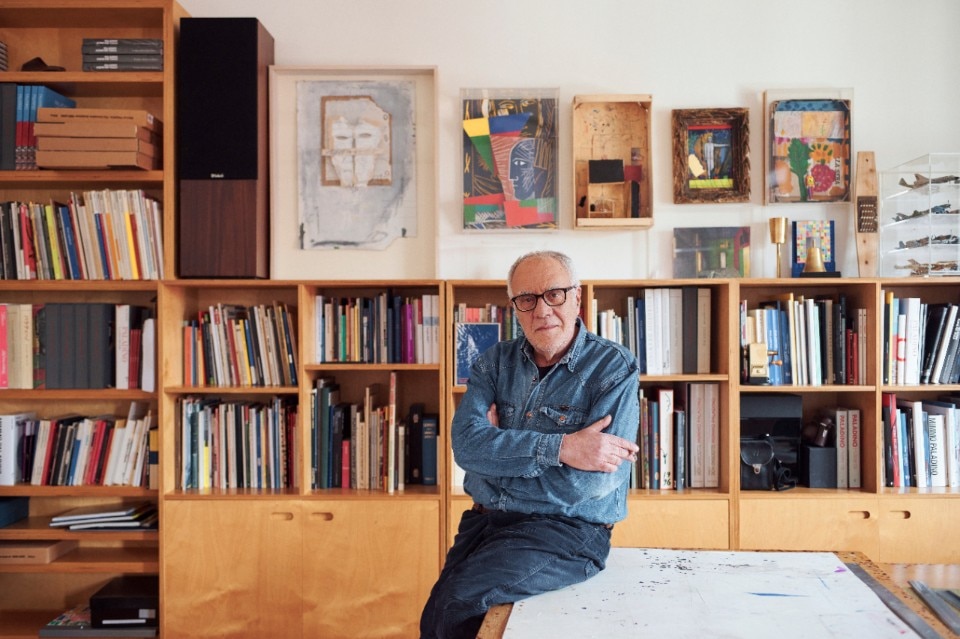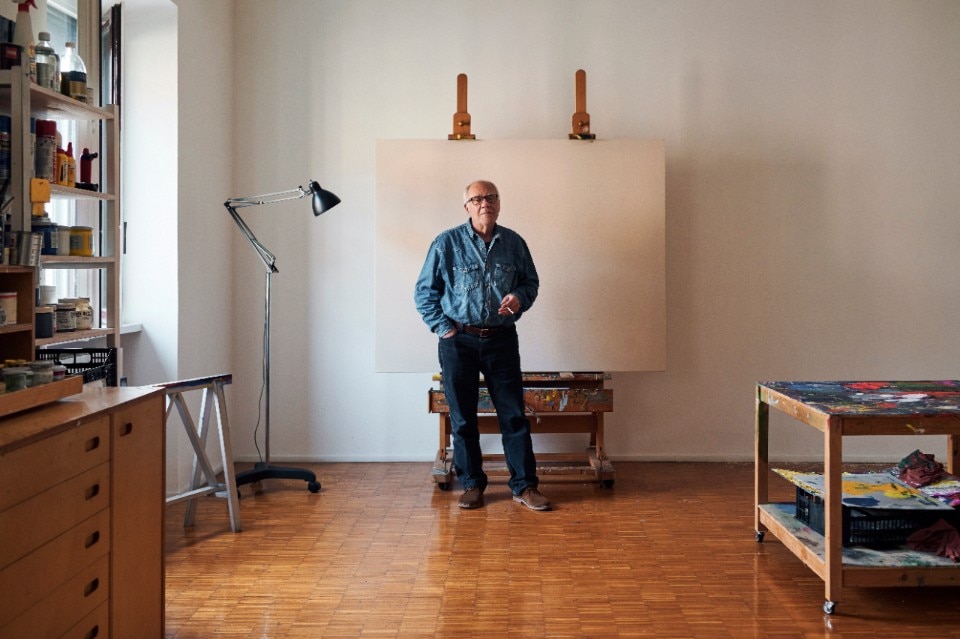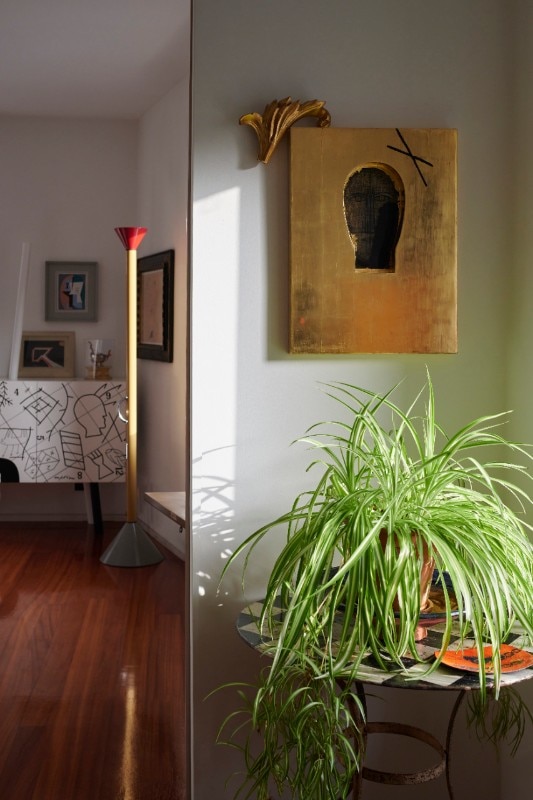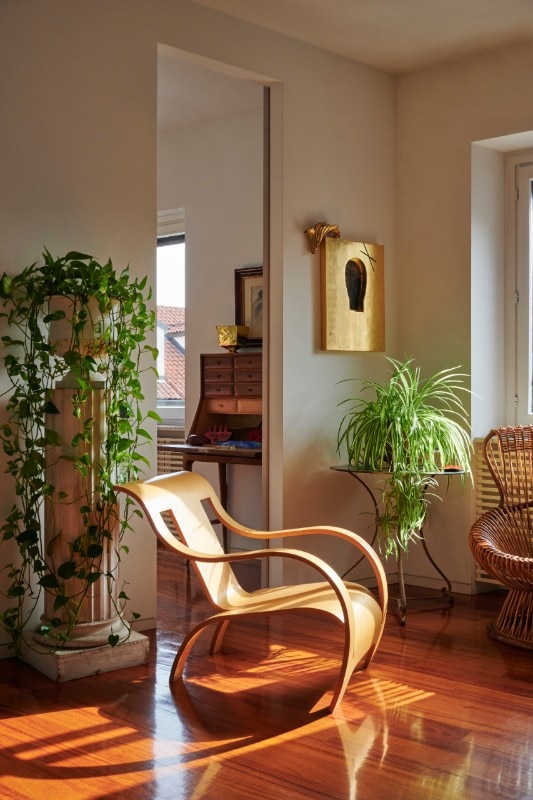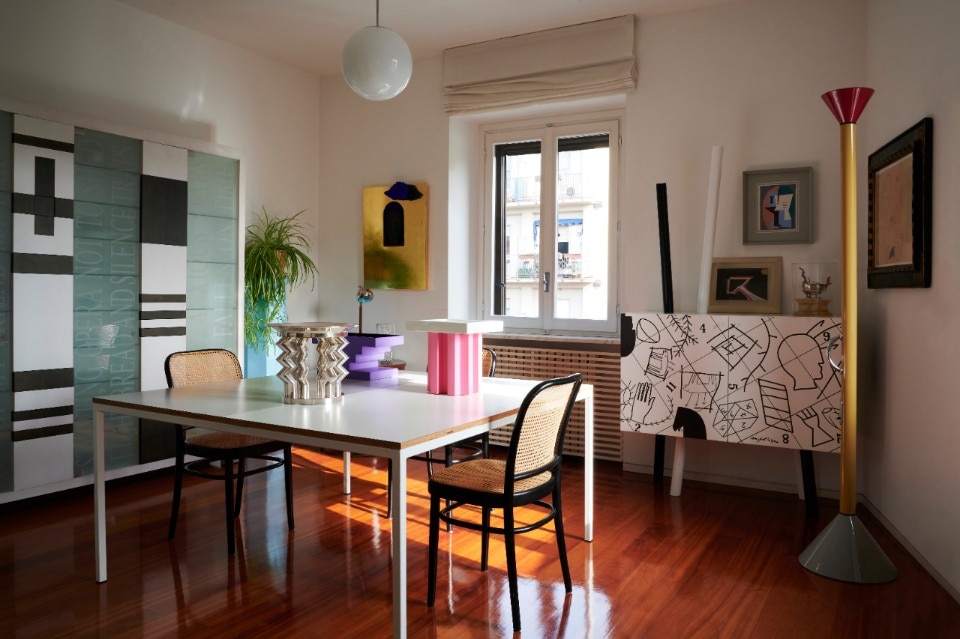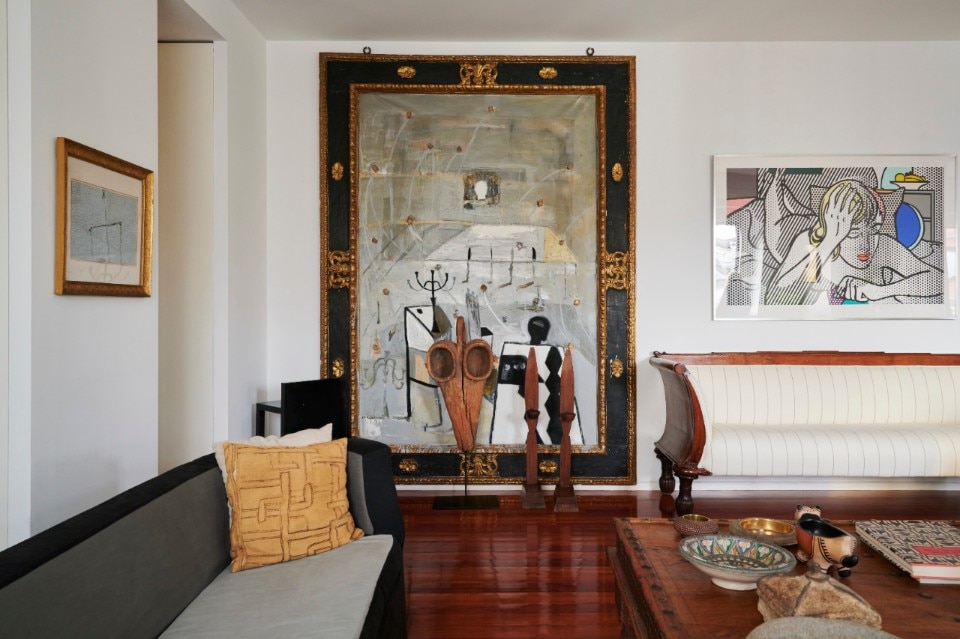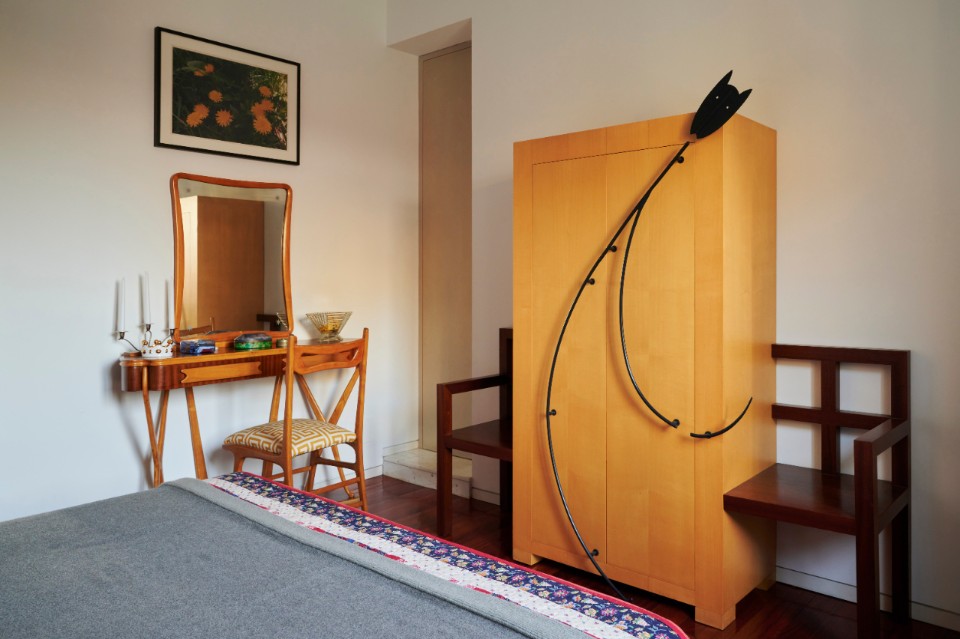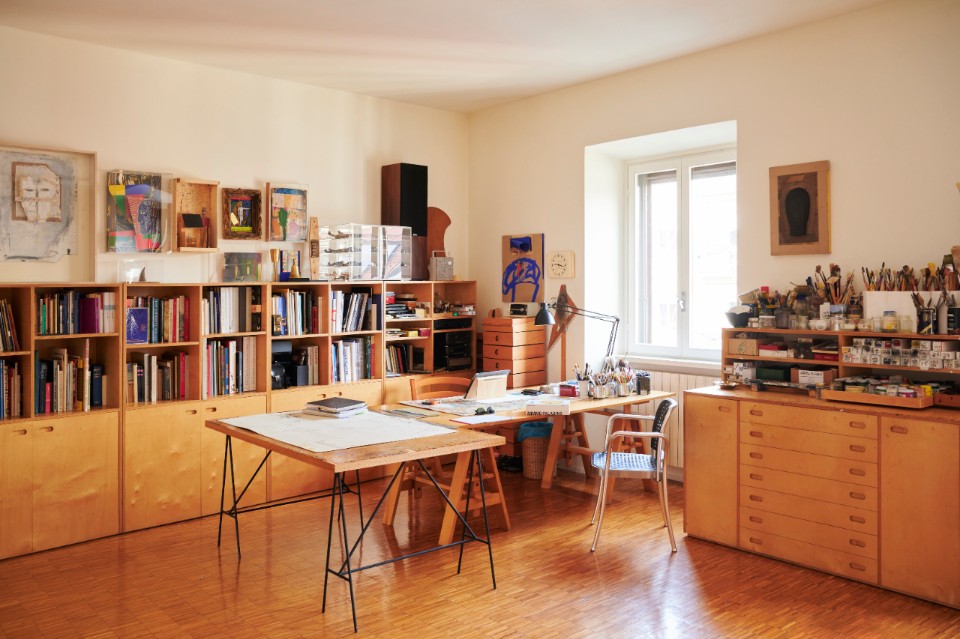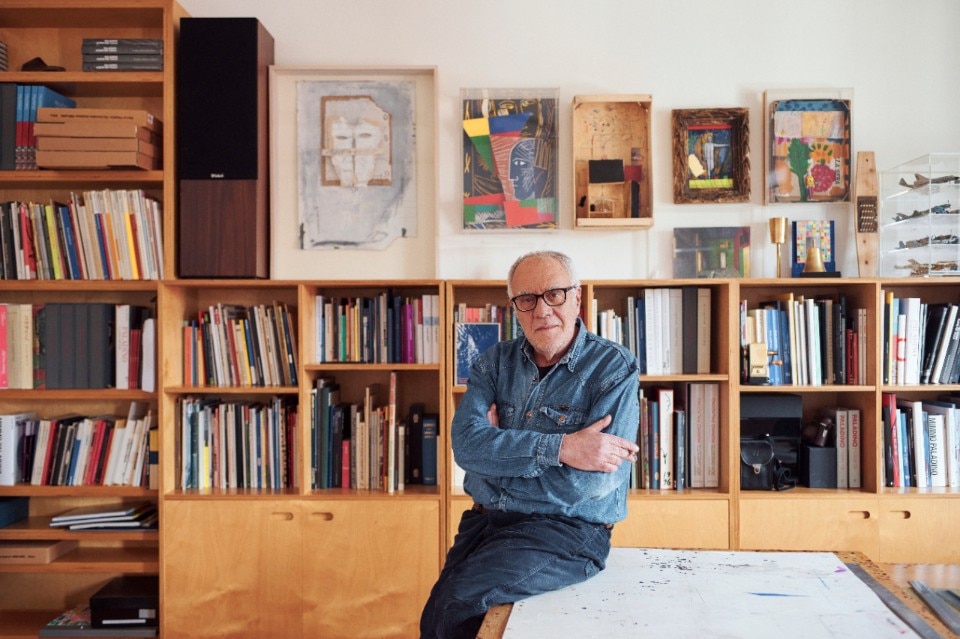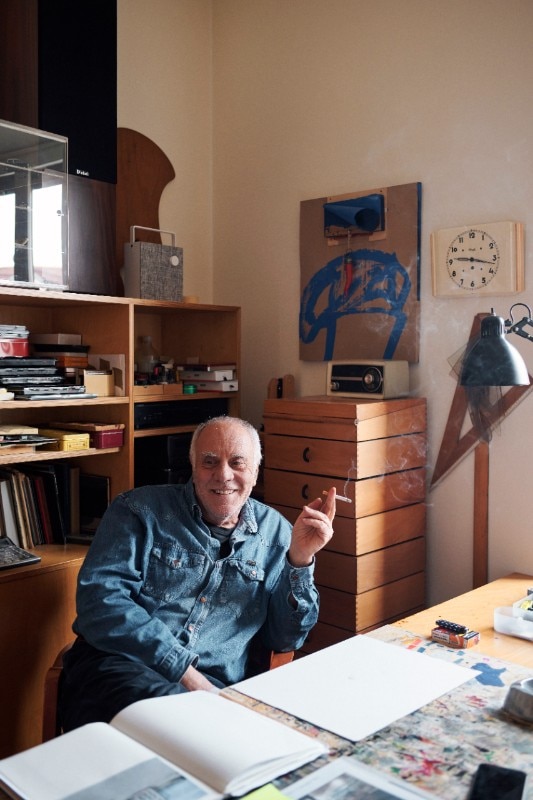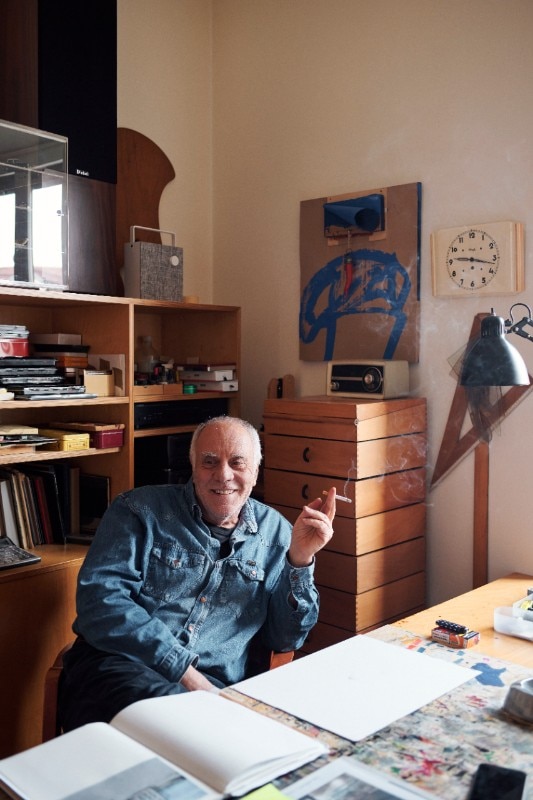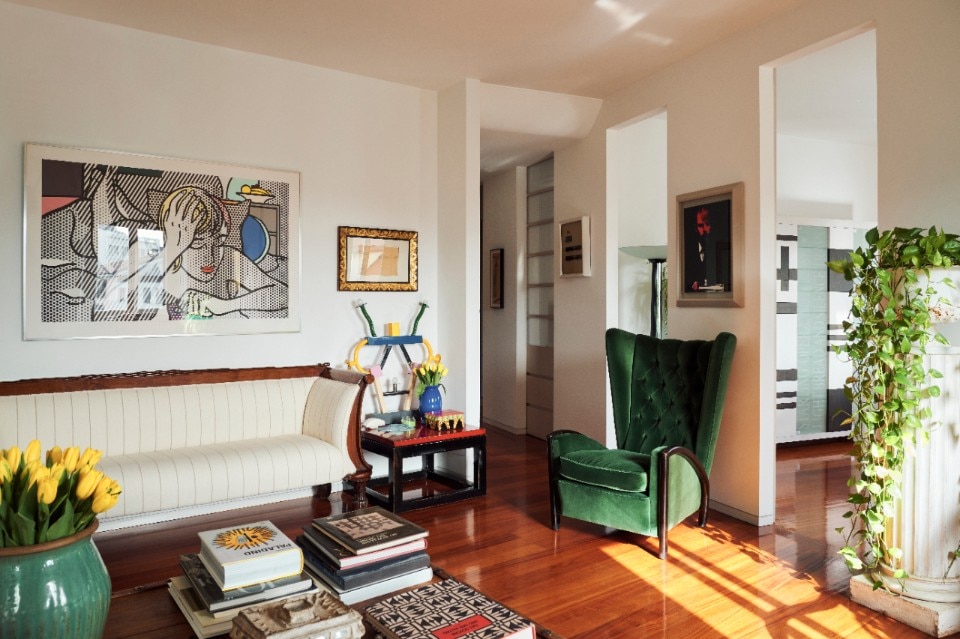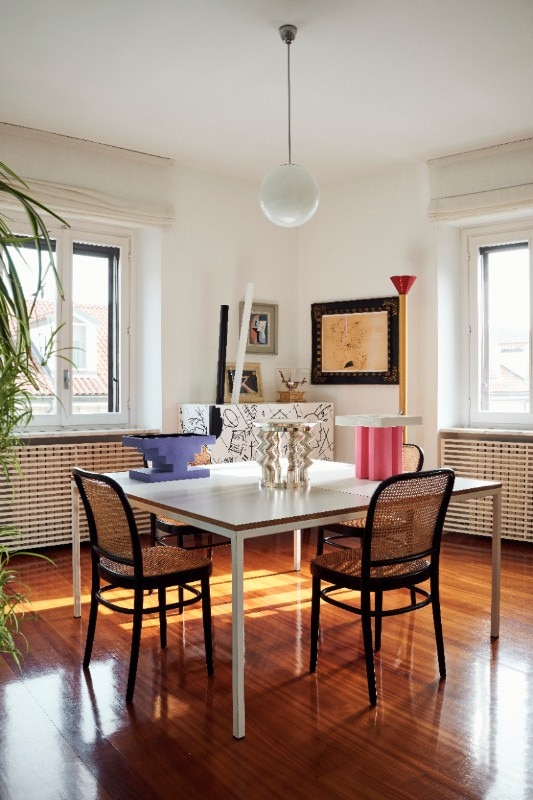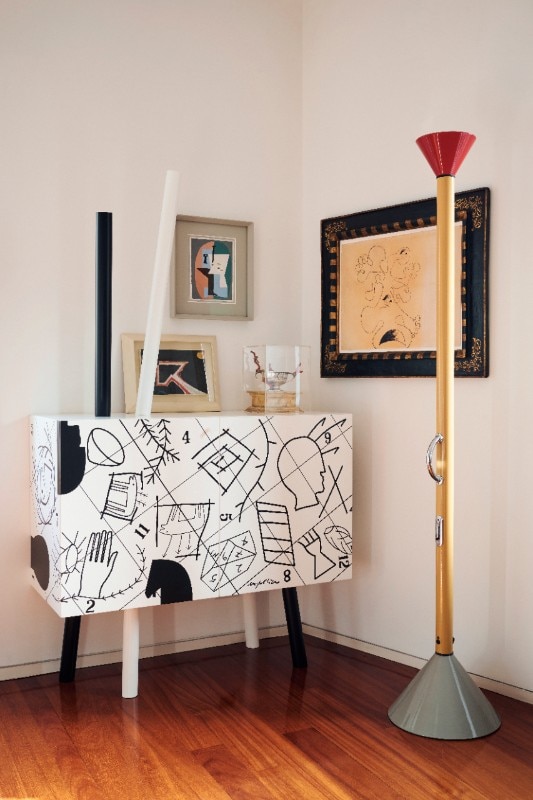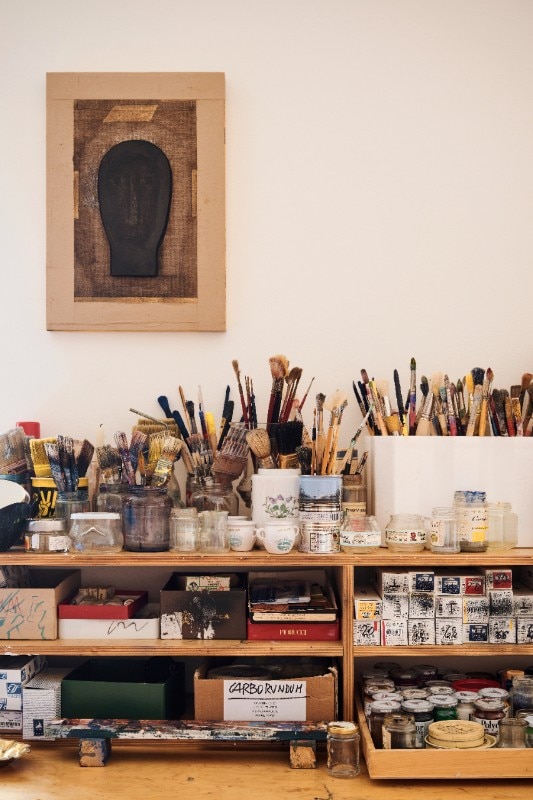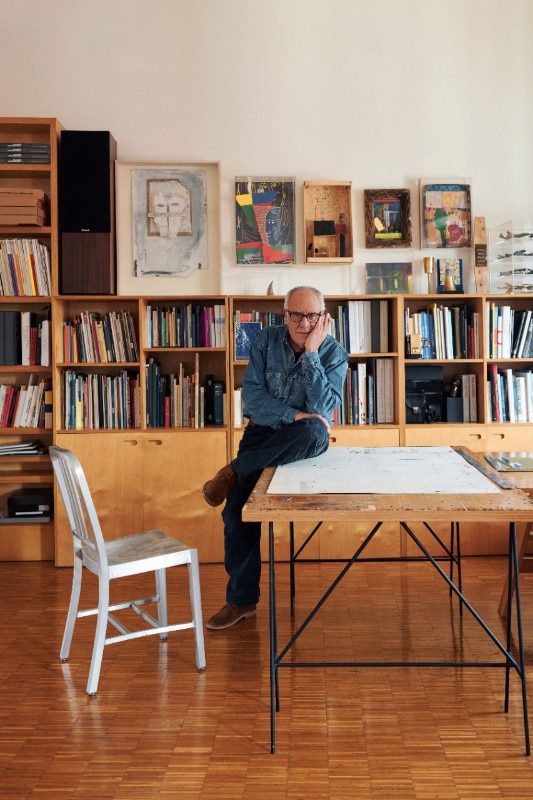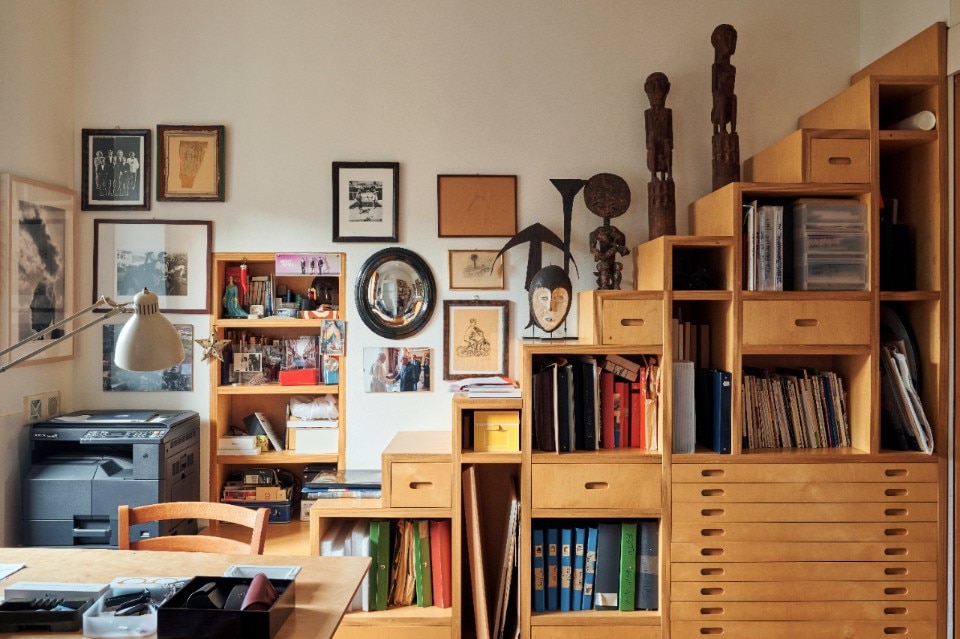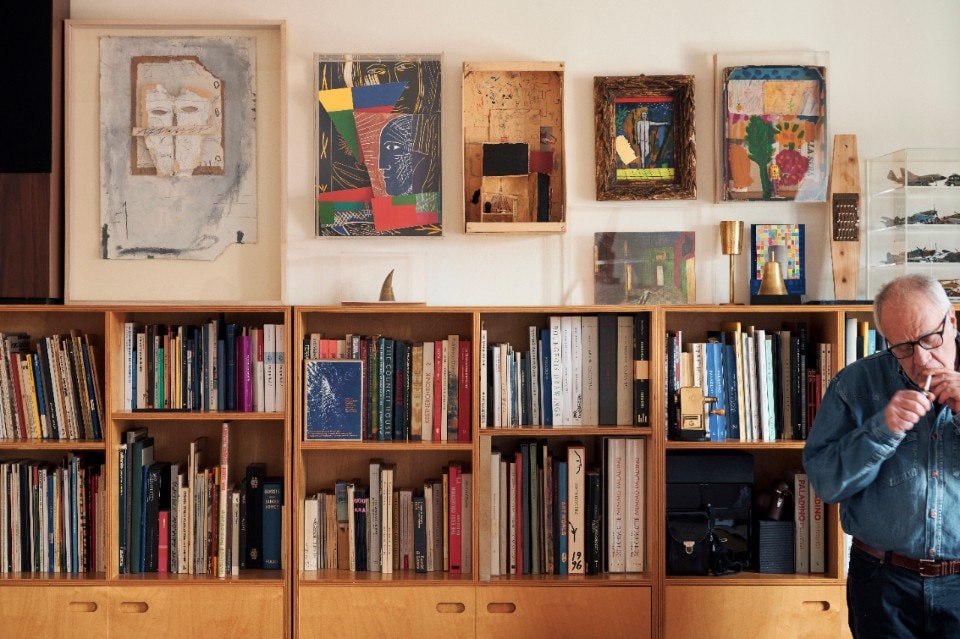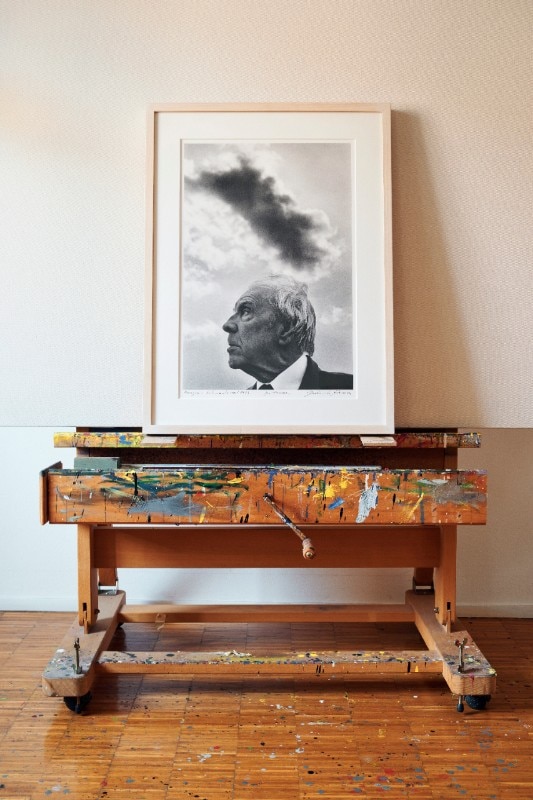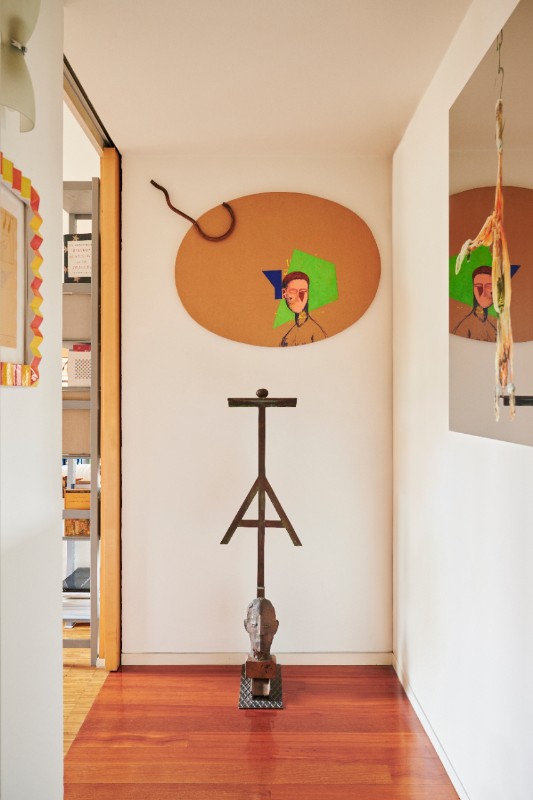“My uncle took me to the Venice Biennale in 1964 to see Pop Art and I came back with its images still in my mind… I think my work is influenced by my first contact with Pop Art and with a whole generation more American than European, and Rauschenberg and Jasper Johns, in particular. I was massively struck by the idea that you could make art not only with brushes but with the most disparate objects or with scrap, as Chamberlain did. I couldn’t grasp the finesse of a Jasper Johns back then but I was utterly fascinated by that performing art and I started cutting out, gluing and experimenting… I was hungry for everything, I wanted to try everything!” Fifty years later, Mimmo Paladino’s desire for cross-contamination and to explore all possible artistic languages remains intact, be it painting, sculpture, films, photography, theatre or stage design.
...Andrei Tarkovsky is the one who influenced me the most. ‘Painting the screen’, I believe, was his expression. His are evocative films, like those of a painter.
He sits me down in the studio of his home of more than forty years in Milan, and hands me the obligatory American Spirit Orange. Then he shows me the screenplay of his next film Inferno (drawn from a theatrical piece by Edoardo Sanguineti) in which Dante characters such as Ugolino alternate with giants such as Pythagoras and Glenn Gould. Inferno comes 15 years after his debut with Quijote (the cast included Peppe Servillo and Lucio Dalla) which was followed by Labyrinthus on the life of Gesualdo da Venosa (with Alessandro Haber) and the triptych Ho perso il cunto. “I adore Fellini’s films, they build a story as you go along but Andrei Tarkovsky is the one who influenced me the most. ‘Painting the screen’, I believe, was his expression. His are evocative films, like those of a painter.”
Only now do I understand the sculpturetribute by the entrance: an orthodox cross constructed with the Russian film director’s initials (A and T) beneath a multiple by Pistoletto. The curious visitor will also immediately notice at the entrance a photograph by Ferdinando Scianna portraying Jorge Luis Borges: “He is the writer I admire the most along with Joyce, the latter for his philosophical enigma and the former for the way he distorts language. I have always supported avantgardes.” Mimmo Paladino has flirted with the world of photography since the 1970s: “By 1974, I was already spending more time in Milan than Rome and back then the gallery of reference was Diagramma of Luciano Inga Pin, a great forgotten character who had all the best photographic works.” As well as for Josef Koudelka, Ugo Mulas and Mario Giacomelli, Paladino confesses to a weakness for his friend Scianna with whom he shares a precious memory: “One day, Ferdinando showed me a photo of his from the 1960s in which he immortalised a man taking his shirt off during a procession in Sicily. Prompted by Gesualdo Bufalino, he pointed out that a character in Piero della Francesca’s The Baptism of Christ is performing the same action in an apparently immobile context. It’s a figurative coincidence, an enigmatic 15th-of-a-second repetition captured centuries apart by two diametrically opposite artists.”
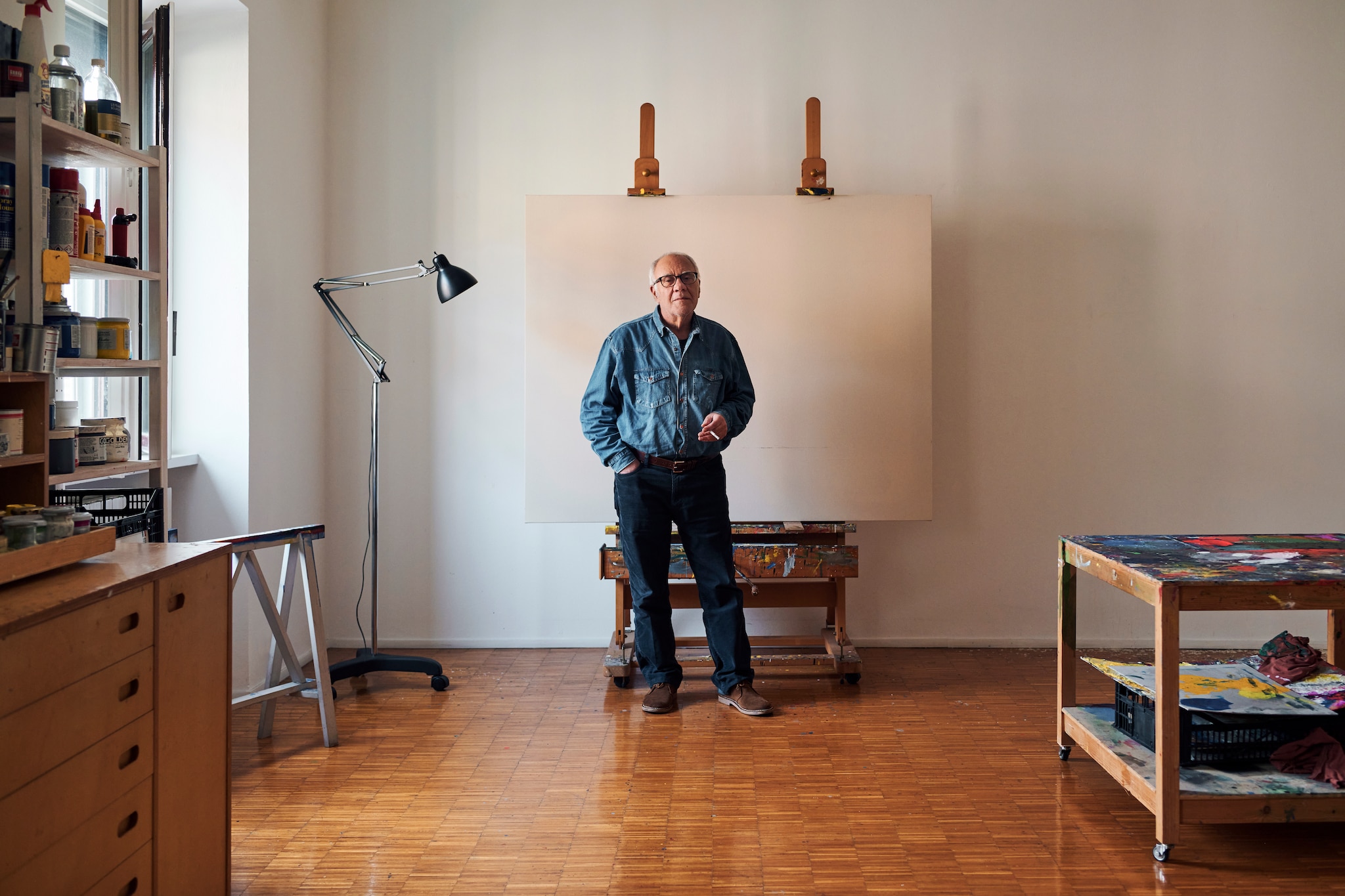
 View gallery
View gallery
Before arriving in the living room, with its striking Roy Lichtenstein serigraph, Warhol Lenin and a Cy Twombly received from Lucio Amelio, you have to walk down a narrow hallway filled with old friends of Mimmo’s: a 1982 note from Alighiero Boetti, an Enrico Castellani and a Piero Gilardi swapped and a small work by Louise Bourgeois. The dining room bears witness to his dialogue with the design world: a piece of furniture he conceived for Cleto Munari, a cupboard designed for the Meta Memphis collection and several objects by Sottsass (“Ettore was one of my very early supporters, from the very first exhibitions with Toselli in Via de Castillia in Milan”). It is time for my biblio-fanatic voyeurism, immediately indulged by Mimmo. “This is the German edition of Tristes Tropiques with a wobbly dedication to me, written by a then 100-year-old Claude Lévi-Strauss. I have always referred to this book, which lacks narration in the traditional sense and has inspired 40 freehand drawings. Impressions of an ancient, primitive and graphic world of universal symbols.”
He pulls out another book of photographs by Lou Reed and the new missal he conceived with Pier Luigi Cerri: “I am waiting for a dedication by the Pope.” I see a small book published by Emilio Mazzoli: “It is called En De Re and impossible to find. I can’t give you this one but if you are patient I’ll send you a catalogue of the exhibition I did with Brian Eno in the basement of the Roundhouse in London, with my Dormienti which resemble Henry Moore’s figures of the blitz.” As I leave, Mimmo suggests I take the lift: “There wasn’t one when we first came here in 1976 . it was a tremendous trek up to the fifth floor every time. I can remember when I was preparing a work in paper and plaster for Marian Goodman. It fell into the stairwell and was completely smashed. Fortunately, we are better served now.”
- Opening image:
- Mimmo Paladino in his apartment in Milano. Photo Valentina Sommariva


